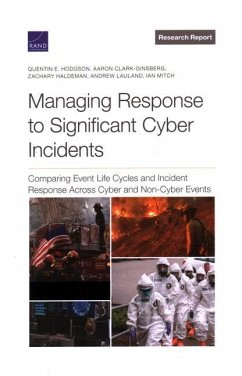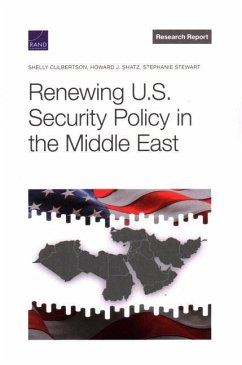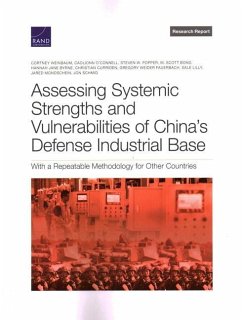
Cost Estimating Framework for U.S. Marine Corps Joint Cyber Weapons
Versandkostenfrei!
Versandfertig in über 4 Wochen
25,99 €
inkl. MwSt.

PAYBACK Punkte
13 °P sammeln!
U.S. Marine Corps Systems Command asked the RAND Corporation to assess the Marine Corps offensive cyber operations acquisition life cycle and identify ways to improve the transparency of related decisionmaking. The authors brought together data on operational capability, scheduling, and risk to develop a life-cycle cost-estimating framework. This framework should help Joint Cyber Weapons (JCW) program leadership understand the potential costs and provide additional guidance on budgeting considerations. It incorporates five classes of inputs and has three types of outputs. In creating the frame...
U.S. Marine Corps Systems Command asked the RAND Corporation to assess the Marine Corps offensive cyber operations acquisition life cycle and identify ways to improve the transparency of related decisionmaking. The authors brought together data on operational capability, scheduling, and risk to develop a life-cycle cost-estimating framework. This framework should help Joint Cyber Weapons (JCW) program leadership understand the potential costs and provide additional guidance on budgeting considerations. It incorporates five classes of inputs and has three types of outputs. In creating the framework, the authors considered the demand for exploits from the operational user, as well as the type of cyber weapon (e.g., exploit, implant, payload), the weapon's target environment (e.g., desktop or mobile systems), vulnerability decay rate, the adversary's defense capabilities, weapon cost, and how various acquisitions are phased in and out of service over time. The framework also addresses the production of cyber weapons, their costs, and how uncertainties are distributed over a specified period. The authors conducted exploratory modeling and simulation to better understand associated uncertainties and model inputs.














